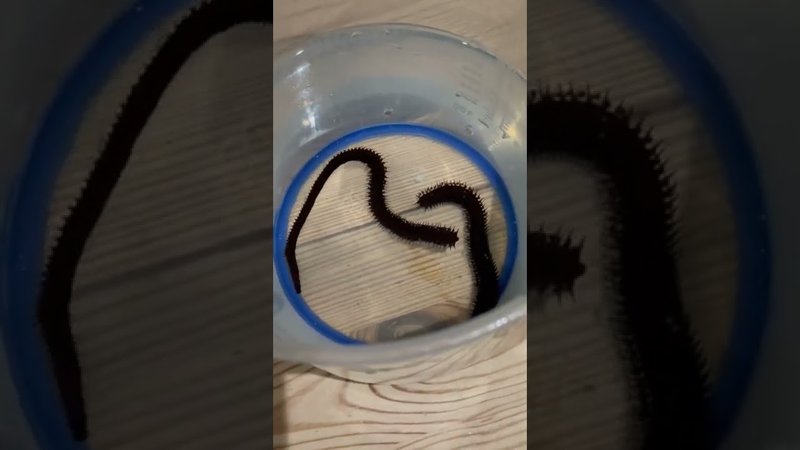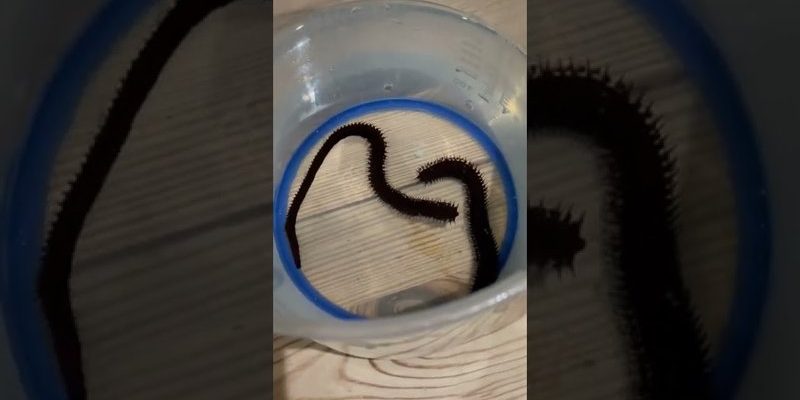
Imagine you’re gearing up for an adventure in your brand-new aquarium, only to find out it may host a secret inhabitant. Bobbit worms are like the ninjas of the marine world; they’re stealthy, pretty camouflaged, and often go unnoticed until it’s too late. But don’t worry! With some patience and keen observation, you can learn to identify these critters early on and keep your tank healthy.
In this guide, we’ll cover everything from what bobbit worms look like to practical tips on how to find them, all while keeping your aquarium thriving. Grab a cup of coffee, and let’s get started!
What Are Bobbit Worms?
Bobbit worms, scientifically known as *Eunice aphroditois*, are marine polychaete worms that can grow quite long—some even reaching over three feet! They have a unique, segmented body with a head that features sharp, jaw-like appendages for catching prey. These worms are typically buried in sand or mud, leaving just their heads exposed. This makes them difficult to spot if you don’t know what to look for.
You might wonder why knowing about bobbit worms is important for your aquarium. While they can be fascinating to observe, they are also predatory. They might munch on your smaller fish or invertebrates if they feel hungry. And let’s face it: nobody wants to wake up to find their favorite fish has disappeared without a trace!
When you first set up your aquarium, you may unknowingly introduce a bobbit worm through live rock, sand, or contaminated equipment. So, being aware of their characteristics and behavior is key to preventing them from becoming a problem.
Identifying the Signs of Bobbit Worms
The first step in detecting bobbit worms is knowing the signs to look for. Here are a few indicators that might suggest their presence in your aquarium:
- Unexplained Fish Loss: If you notice that fish are mysteriously disappearing, it’s a red flag. Bobbit worms can be quite stealthy in their hunting.
- Visible Heads: Sometimes, you might catch a glimpse of a bobbit worm’s head peeking out of the substrate. They have a unique, striking appearance with bristles and jaws.
- Uneven Substrate: If your substrate looks disturbed or uneven, it could indicate a burrowing worm. They often rearrange the sand as they dig in.
If you notice any of these signs, take action soon. It’s better to be proactive rather than reactive. If your tank has a glass bottom, you might even see some of their burrows when looking underneath. Being observant can save you a lot of hassle down the line.
How to Catch a Bobbit Worm in Action
So, you think you’ve got a bobbit worm on your hands? Here’s how to catch one in the act. It might not be as easy as catching a glimpse of a celebrity, but it’s totally doable!
1. **Use a Flashlight**: At night when your tank is dimly lit, shine a flashlight on the substrate. Bobbit worms sometimes come out to hunt, and the light can draw them out.
2. **Check Feeding Time**: During feeding, watch closely as your fish nibble on their food. If you see a sudden hesitation or fish darting away, it could be a sign that a bobbit worm is nearby.
3. **Look for Movement**: Pay attention to any unusual movements in the sand. Bobbit worms can create small waves or disturbances as they move about under the substrate.
The trick is to be patient. Observing your aquarium regularly will give you a better chance of spotting one of these sneaky creatures.
Preventing Bobbit Worm Infestations
If you want to keep bobbit worms away, there are several measures you can take during the aquarium setup process:
- Quarantine Live Rock: Always rinse and quarantine any live rock or sand before adding it to your aquarium. This helps reduce the chances of introducing unwanted pests.
- Buy from Reputable Sources: Purchase materials from trusted suppliers who can guarantee their products are free from pests.
- Regular Tank Maintenance: Keep your aquarium clean and remove any excess debris. A well-maintained tank is less attractive to unwanted guests.
By taking these proactive steps, you can create a healthier environment for your fish and reduce the likelihood of bobbit worms taking up residence in your tank.
Dealing with Established Bobbit Worms
If you’ve already spotted a bobbit worm in your aquarium and need to address it, here’s what to consider:
1. **Manual Removal**: If you’re feeling brave, you can try to gently remove the bobbit worm. Use a pair of tweezers and carefully pull it out of the substrate. Just be cautious, as they can bite!
2. **Trap It**: Some aquarists use traps baited with food to lure the worm out. You might place a piece of shrimp or fish in a small container and set it on the substrate overnight.
3. **Consult an Expert**: If you’re unsure how to handle the situation, it might be best to consult an aquarium specialist or a local fish store for advice.
Though Bobbit worms can be a challenge, remember that in some situations they can also help maintain your tank’s ecosystem. They eat detritus and help clean the substrate. Just be sure to balance your aquarium’s population so they don’t overtake your tank.
Reassessing Your Aquarium’s Ecosystem
If you find yourself with a bobbit worm—or several—after detecting them, consider this a good time to reassess your aquarium’s overall ecosystem. Healthy tanks thrive on balance.
– **Reevaluate Stocking Levels**: Ensure you’re not overcrowding your tank. Too many fish can lead to stress and make them easier targets for predators like bobbit worms.
– **Diversity is Key**: Incorporate a variety of fish and invertebrates. Some species can help keep populations of pests in check, leading to a more stable ecosystem.
– **Maintain Water Quality**: Regular water tests and maintenance will keep your tank environment strong, ensuring all inhabitants, including potential bobbit worms, remain in check.
Ultimately, this is all about creating a vibrant space where your aquatic life can thrive. By understanding and managing the balance, you’ll be enjoying your aquarium for years to come.
As you’re learning to navigate the fascinating world of aquarium care, don’t be discouraged if bobbit worms come into play. With awareness, observation, and a proactive approach, you can manage their presence and maintain a beautiful, healthy aquarium. Let your undersea adventure continue!

